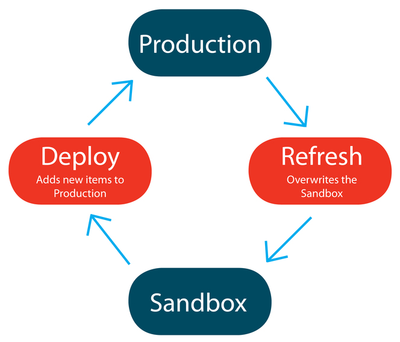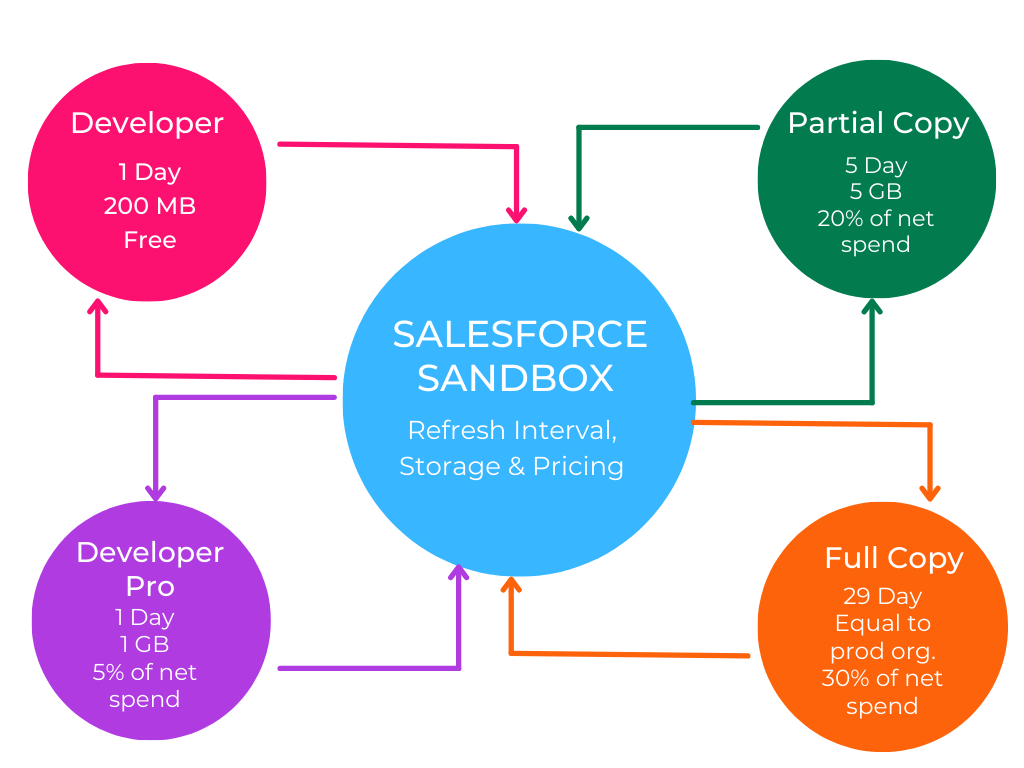
In the dynamic world of Salesforce, staying ahead means constantly innovating and refining your processes. One essential tool that aids in this pursuit is Salesforce Sandbox. But what exactly is a Sandbox in Salesforce? How does it benefit organizations? Let’s delve into this cornerstone of Salesforce development.
What is Sandbox in Salesforce?
In simple terms, a Salesforce Sandbox is a replica of your organization’s Salesforce environment. It provides a safe and isolated space for developers, administrators, and testers to experiment, build, and test changes without affecting the live production environment
Think of it as a playground where you can freely try out new configurations, customization, or integrations without fearing disrupting your business operations. Whether implementing complex workflows, deploying new applications, or conducting performance testing, the Sandbox offers a controlled environment to validate changes before rolling them out to your live instance.
Types of Salesforce Sandbox:
Salesforce offers several types of Sandboxes tailored to different use cases and requirements. Each type comes with its own set of features and limitations:
1. Developer Sandbox
Ideal for individual developers or small teams, Developer Sandboxes provide a lightweight environment for coding and testing. They offer a copy of your production organization’s metadata but don’t include any data. Developers can experiment with Apex code, Visualforce pages, and other customizations without risking data integrity.
2. Developer Pro Sandbox
Building upon the capabilities of Developer Sandboxes, Developer Pro Sandboxes offer increased storage and data limits. This makes them suitable for more extensive development projects where developers require access to a larger dataset for testing and debugging purposes.
3. Partial Copy Sandbox
As the name suggests, Partial Copy Sandboxes contain a partial copy of your production organization’s data and metadata. They’re well-suited for testing scenarios that require realistic data, such as user acceptance testing (UAT) or performance testing. However, they don't include all records and may be subject to data obfuscation
or masking.
4. Full Sandbox
The most comprehensive option, Full Sandboxes, mirrors your production environment entirely, including metadata and data. They’re a replica of your live instance, making them invaluable for thorough testing, training, and staging complex deployments. However, due to their complete nature, they consume more storage and are typically refreshed less frequently.
5. Developer Pro Sandboxes
A newer addition to the lineup, Developer Pro Sandboxes offer a balance between the capabilities of Developer and Partial Copy Sandboxes. They provide a sizable data subset and metadata, making them suitable for various development and testing tasks.
Benefits of Sandbox in Salesforce:
Now that we understand what is Sandbox in Salesforce and the types available, let’s explore the various benefits it offers to organizations:
1. Risk-Free Development and Testing
By providing a separate environment for experimentation, Sandboxes mitigate the risk of introducing bugs or errors into your live production instance. Developers can freely test new features, configurations, or integrations without fear of disrupting critical business operations.
2. Improved Collaboration
Sandboxes facilitate collaboration among development teams, administrators, and stakeholders by providing a centralized platform for testing and feedback. Teams can work concurrently on projects within their respective Sandboxes, streamlining the development lifecycle and accelerating time-to-market.
3. Enhanced Quality Assurance
With Sandboxes, quality assurance (QA) teams can thoroughly test new functionalities in a controlled environment before releasing them to end-users. This helps identify and address any issues or inconsistencies early in the development process, ensuring a smoother deployment and a higher-quality end product.
4. Realistic Testing Scenarios
Partial Copy and Full Sandboxes allow organizations to test their applications and processes using realistic datasets. This enables a more accurate assessment of performance, scalability, and user experience, leading to more robust solutions that meet end-users’ needs.
5. Training and Onboarding
Sandboxes serve as valuable training grounds for new users, enabling them to familiarize themselves with Salesforce features and workflows in a safe and non- disruptive environment. Training exercises can be conducted using Sandbox instances without impacting live data or configurations.
6. Streamlined Deployment Process
Organizations can minimize deployment errors and avoid costly rollbacks by thoroughly testing changes in Sandboxes before deploying them to production. Sandboxes provide a controlled path for promoting changes through development, staging, and production environments, ensuring a smooth and reliable deployment process.
7. Cost Savings
While setting up and maintaining Sandboxes incurs some overhead expenses, the cost of potential errors or disruptions in the live production environment far outweighs these expenses. Sandboxes help organizations avoid costly downtime, data loss, and reputational damage by catching and addressing issues early in the development cycle.

When we define what is Sandbox in Salesforce, we can say that Salesforce Sandboxes empower organizations to innovate, iterate, and confidently optimize their Salesforce implementations. By providing a safe and structured environment for development and testing, Sandboxes enables organizations to deliver high-quality solutions that meet the evolving needs of their users and stakeholders.
Whether you’re a developer, administrator, or business leader, leveraging Sandboxes
effectively can drive efficiency, collaboration, and success in your Salesforce journey.


